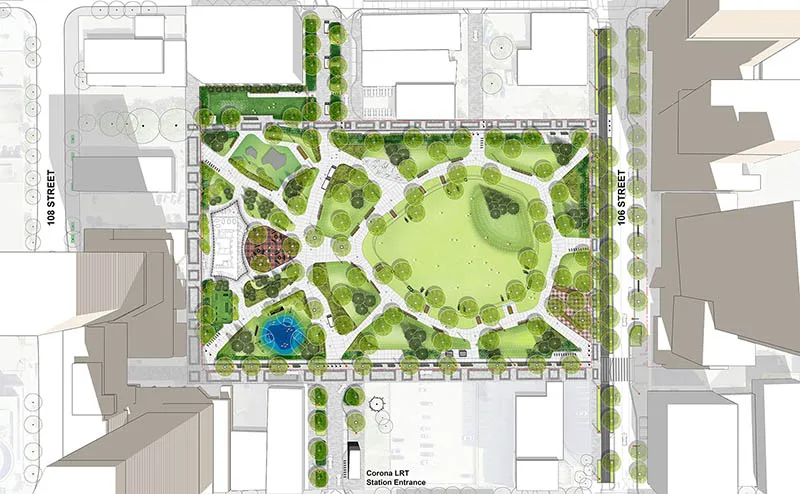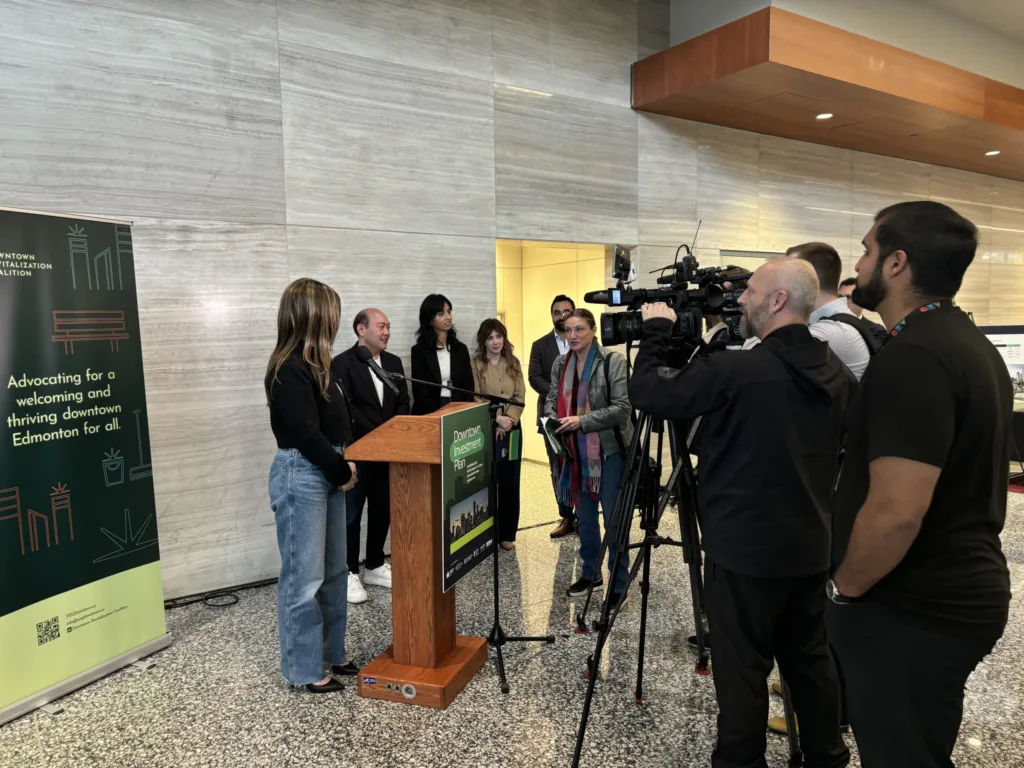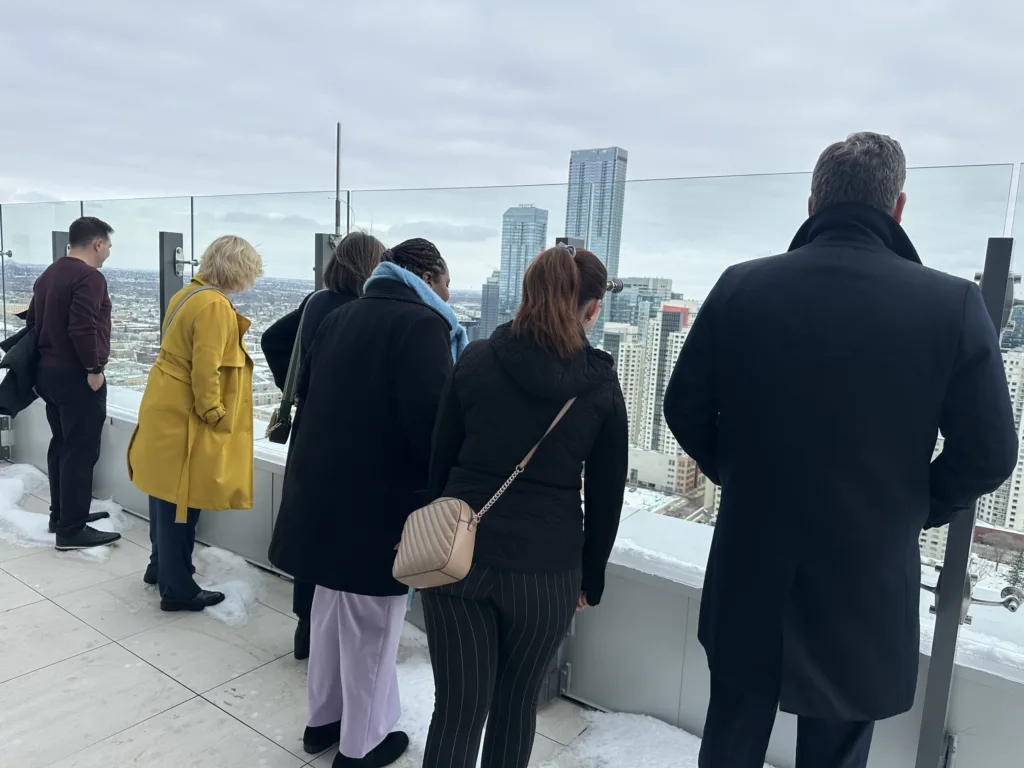A Crossroads for Edmonton’s Downtown Core
A few months ago, Edmonton’s City Council discussed city administration’s Downtown Action Plan (DAP), a holistic plan with actions designed to attract economic investment, incentivize housing developments, and catalyze public-private partnerships.
During their presentation, city administration spoke to the strong alignment with industry and community partners, noting how the Downtown Action Plan integrated ideas from the Downtown Investment Plan (DIP) launched last year. Both reports underscore a troubling trend: downtown’s share of tax revenue has declined from 10% to 5.2%. Reversing this decline would require an estimated $6 billion in new investment – equivalent to building around 23 EPCOR Towers.
Should we address this problem? Thankfully, the answer is clear. City officials, developers, residents, business owners, and downtown organizations, are all aligned – and they believe the solution is already on the table – funding the implementation of the Downtown Action Plan’s most pressing priorities and actions through the extension of the Capital City Downtown Community Revitalization Levy (CRL).
As detailed in the plan, extending the CRL would unlock $553 million in revenue to support high-impact projects like improvements to LRT entrances, new green and open spaces, support for the arts, housing for students, seniors, and everyone in-between, and infrastructure to support a new event park and complete communities.

The Voices of Council
BILD Edmonton Metro’s VP of Strategy and Operations, Jason Syvixay, framed the Downtown Action Plan as an essential strategic roadmap. “Partnership is not negotiable,” he said, “it’s a necessity.”
In fact, as presented by city administration, since 2015, nearly $5 billion has been invested downtown by private businesses and the public sector. With strategic public infrastructure investments, the private sector has developed three new office towers, and over 3,500 residential units that are either completed or currently under construction.
Brian Murray, Partner at B&A, emphasized that the downtown core is “not just the heart of the city, but a key driver of economic and residential vibrancy.” He pointed to critical maintenance and infrastructure needs, particularly around schools and main streets, as crucial elements to downtown livability.
The Edmonton Downtown Business Association’s CEO, Puneeta McBryan, praised the plan as “visionary” and admitted that it was reflective of Edmonton’s reputation as a planning leader. In terms of next steps, McBryan noted that the plan lacked a clear implementation strategy. She advocated for stronger formalized partnerships and more structured public-private governance. “This is where the rubber hits the road, and we need to focus on these parts,” she said.

Students from the City of Edmonton’s Youth Council emphasized the need for green spaces, river valley access, and meaningful inclusion of students in decision-making. They also voiced youth-oriented concerns, from missing links in affordable housing, safety on public transit, and the need for active transportation infrastructure. “High rent and student debt are already overwhelming many youths,” one of the council members said.
When it comes to downtown, university students are very in sync with the industry, especially when it’s regarding affordable and attainable housing. And, in alignment with actions related to student housing and the Attainable Housing Incentive Program, they’re not just voices in City Hall; they’re the future of these issues.
Extending the CRL
On June 26, the CRL extension was brought to council for a public hearing, with goals to determine if the ROI will pay off. The actions within this plan are set to help bring activity back into the area, providing more amenities, new opportunities, and public spaces for residents, workers, business owners and tourists alike.
On Friday evening, June 27, after two days of debating in council, the CRL extension was passed until 2044. This will enable Edmonton to provide for housing downtown, support art and culture, and provide more community events. In short, it’s a big win for Edmonton, and an even bigger win for Edmontonians.
BILD Edmonton Metro supported the CRL, believing that it was crucial to supporting housing development and residential attraction. “Any CRL investment should yield a return of two to five times its value,” said CEO Kalen Anderson. She also stressed the importance of this extension, saying that continued advocacy will result in the outcome for Edmonton that is desired by many: a City that “can foster vibrant, economically resilient neighbourhoods that benefit the entire downtown core.”

A Step Forward
While it took considerable time and thoughtful debate to approve the Downtown Investment Plan, the Downtown Action Plan, and the Capital City Downtown Community Revitalization Levy, these robust conversations have brought us together to tackle tough issues with a shared commitment to our city’s future. Securing these approvals was a critical first step — a short sprint in a much longer marathon. To truly revitalize our downtown, sustained collaboration and continued investment will be essential.
Written by Payton Phillips
